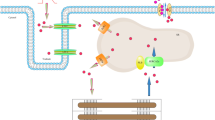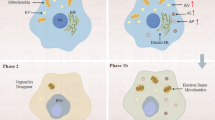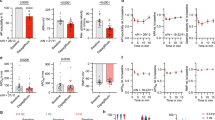Abstract
The A1/A2 adenosine agonist 5′-(N-ethylcarboxamido) adenosine (NECA) limits infarction when administered at reperfusion. The present study investigated whether p70S6 kinase is involved in this anti-infarct effect. Adult rat ventricular myocytes were isolated and incubated in tetramethylrhodamine ethyl ester (TMRE, 100 nM), which causes cells to fluoresce in proportion to their mitochondrial membrane potential. A reduction in TMRE fluorescence serves as an indicator of collapse of the mitochondrial transmembrane potential. Cells were subjected to H2O2 (200 µM), which like ischemia induces loss of mitochondrial membrane potential. Fluorescence was measured every 3 min and to facilitate quantification membrane potential was arbitrarily considered as collapsed when fluorescence reached less than 60% of the starting value. Adding NECA (1 mM) to the cells prolonged the time to fluorescence loss (48.0 ± 3.2 min in the NECA group versus 29.5 ± 2.2 min in untreated cells, P < 0.001) and the mTOR/p70S6 kinase inhibitor rapamycin (5 nM) abolished this protection (31.3 ± 3.4 min). Since cyclosporine A offered similar protection, mitochondrial permeability transition pore formation is a likely cause of the H2O2-induced loss of potential. The direct GSK-3β inhibitor SB216763 (3 µM) also prolonged the time to fluorescence loss (49.2 ± 2.1 min, P < 0.001 versus control), and its protection could not be blocked by rapamycin (42.2 ± 2.3 min, P < 0.001 versus control). NECA treatment (100 nM) of intact isolated rabbit hearts at reperfusion after 30 min of regional ischemia decreased infarct size from 33.0 ± 3.8% of the risk zone in control hearts to 11.8 ± 2.0% (P < 0.001), and rapamycin blocked this NECA-induced protection (38.3 ± 3.7%). A comparable protective effect was seen for SB216763 (1 µM) with infarct size reduction to 13.5 ± 2.3% (P < 0.001). NECA treatment (200 nM) of intact rabbit hearts at reperfusion also resulted in phosphorylation of p70S6 kinase more than that seen in untreated hearts. This NECA-induced phosphorylation was blocked by rapamycin. These experiments reveal a critical role for p70S6 kinase in the signaling pathway of NECA’s cardioprotection at reperfusion.





Similar content being viewed by others
References
Akao M, O’Rourke B, Kusuoka H, Teshima Y, Jones SP, Marban E (2003) Differential actions of cardioprotective agents on the mitochondrial death pathway. Circ Res 92:195–202
Akao M, O’Rourke B, Teshima Y, Seharaseyon J, Marban E (2003) Mechanistically distinct steps in the mitochondrial death pathway triggered by oxidative stress in cardiac myocytes. Circ Res 92:186–194
Baxter GF, Hale SL, Miki T, Kloner RA, Cohen MV, Downey JM, Yellon DM (2000) Adenosine A(1) agonist at reperfusion trial (AART): results of a three-center, blinded, randomized, controlled experimental infarct study. Cardiovasc Drug Ther 14:607–614
Baxter GF, Mocanu MM, Brar BK, Latchman DS, Yellon DM (2001) Cardioprotective effects of transforming growth factor-beta 1 during early reoxygenation or reperfusion are mediated by p42/p44 MAPK. J Cardiovasc Pharmacol 38:930–939
Bell RM, Yellon DM (2003) Bradykinin limits infarction when administered as an adjunct to reperfusion in mouse heart: the role of PI3K, Akt and eNOS. J Mol Cell Cardiol 35:185–193
Budde JM, Velez DA, Zhao Z, Clark KL, Morris CD, Muraki S, Guyton RA, Vinten-Johansen J (2000) Comparative study of AMP579 and adenosine in inhibition of neutrophil-mediated vascular and myocardial injury during 24 h of reperfusion. Cardiovasc Res 47:294–305
Chen QM, Tu VC, Wu Y, Bahl JJ (2000) Hydrogen peroxide dose dependent induction of cell death or hypertrophy in cardiomyocytes. Arch Biochem Biophys 373:242–248
Felix SB, Stangl V, Pietsch P, Bramlage P, Staudt A, Bartel S, Krause EG, Borschke JU, Wernecke KD, Isenberg G, Baumann G (2001) Soluble substances released from postischemic reperfused rat hearts reduce calcium transient and contractility by blocking the L-type calcium channel. J Am Coll Cardiol 37:668–675
Gross ER, Hsu AK, Gross GJ (2004) Opioid-induced cardioprotection occurs via glycogen synthase kinase beta inhibition during reperfusion in intact rat hearts. Circ Res 94:960–966
Harada H, Andersen JS, Mann M, Terada N, Korsmeyer SJ (2001) p70S6 kinase signals cell survival as well as growth, inactivating the pro-apoptotic molecule BAD. P Natl Acad Sci USA 98:9666–9670
Hausenloy D, Wynne A, Duchen M, Yellon D (2004) Transient mitochondrial permeability transition pore opening mediates preconditioning-induced protection. Circulation 109:1714–1717
Hausenloy DJ, Mocanu MA, Yellon DM (2004) Cross-talk between the survival kinases during early reperfusion: its contribution to ischemic preconditioning. Cardiovasc Res 63:305–312
Hausenloy DJ, Yellon DM (2004) New directions for protecting the heart against ischaemia-reperfusion injury: targeting the Reperfusion Injury Salvage Kinase (RISK)-pathway. Cardiovasc Res 61:448–460
Jonassen AK, Mjos OD, Sack MN (2004) p70s6 kinase is a functional target of insulin activated Akt cell-survival signaling. Biochem Biophys Res Commun 315:160–165
Jonassen AK, Sack MN, Mjos OD, Yellon DM (2001) Myocardial protection by insulin at reperfusion requires early administration and is mediated via Akt and p70s6 kinase cell-survival signaling. Circ Res 89:1191–1198
Juhaszova M, Zorov DB, Kim SH, Pepe S, Fu Q, Fishbein KW, Ziman BD, Wang S, Ytrehus K, Antos CL, Olson EN, Sollott SJ (2004) Glycogen synthase kinase-3beta mediates convergence of protection signaling to inhibit the mitochondrial permeability transition pore. J Clin Invest 113:1535–1549
Kis A, Baxter GF, Yellon DM (2003) Limitation of myocardial reperfusion injury by AMP579, an adenosine A1/A2A receptor agonist: role of A2A receptor and Erk1/2. Cardiovasc Drugs Ther 17:415–425
Krieg T, Philipp S, Cui L, Dostmann WR, Downey JM, Cohen MV (2005) Peptide blockers of PKG inhibit ROS generation by acetylcholine and bradykinin in cardiomyocytes but fail to block protection in the whole heart. Am J Physiol 288:H1976–H1981
Murphy E, Steenbergen C (2005) Inhibition of GSK-3beta as a target for cardioprotection: the importance of timing, location, duration and degree of inhibition. Expert Opin Ther Targets 9:447–456
Piper HM, Probst I, Schwartz P, Hutter FJ, Spieckermann PG (1982) Culturing of calcium stable adult cardiac myocytes. J Mol Cell Cardiol 14:397–412
Pitarys CJ, Virmani R, Vildibill HD, Jackson EK, Forman MB (1991) Reduction of myocardial reperfusion injury by intravenous adenosine administered during the early reperfusion period. Circulation 83:237–247
Proud CG (1996) p70 S6 kinase: an enigma with variations. Trends Biochem Sci 21:181–185
Schulz R (2005) A new paradigm: cross talk of protein kinases during reperfusion saves life! Am J Physiol 288:H1–H2
Simunek T, Bouwman RA, Boer C, de Lange JJ, Musters RJP (2004) SIH, a novel lipophilic iron chelator, protects H9c2 myoblasts from oxidative stress-induced mitochondrial injury and cell death. J Mol Cell Cardiol 36:759–759
Todd J, Zhao ZQ, Williams MW, Sato H, VanWylen DGL, Vinten-Johansen J (1996) Intravascular adenosine at reperfusion reduces infarct size and neutrophil adherence. Ann Thorac Surg 62:1364–1372
VanderHeide RS, Reimer KA (1996) Effect of adenosine therapy at reperfusion on myocardial infarct size in dogs. Cardiovasc Res 31:711–718
Xu Z, Park SS, Mueller RA, Bagnell RC, Patterson C, Boysen PG (2005) Adenosine produces nitric oxide and prevents mitochondrial oxidant damage in rat cardiomyocytes. Cardiovasc Res 65:803–812
Xu ZL, Cohen MV, Downey JM, Vanden Hoek TL, Yao ZH (2001) Attenuation of oxidant stress during reoxygenation by AMP 579 in cardiomyocytes. Am J Physiol 281:H2585–H2589
Xu ZL, Yang XM, Cohen MV, Neumann T, Heusch G, Downey JM (2000) Limitation of infarct size in rabbit hearts by the novel adenosine receptor agonist AMP 579 administered at reperfusion. J Mol Cell Cardiol 32:2339–2347
Yang XM, Krieg T, Cui L, Downey JM, Cohen MV (2004) NECA and bradykinin at reperfusion reduce infarction in rabbit hearts by signaling through PI3K, ERK, and NO. J Mol Cell Cardiol 36:411–421
Acknowledgments
We thank Karin Lissek for technical assistance and Sandra Grugel for myocyte preparation. This study was supported in part by grants from the Department für kardiovaskuläre Medizin (T.K.) and the Forschungsverbund Molekulare Medizin (T.K.) of the University Greifswald, and HL-20648 (J.M.D.) and HL-50688 (M.V.C.) from the National Heart, Lung, and Blood Institute of NIH. K.F. was supported by a grant from BMBF/NBL-3.
Author information
Authors and Affiliations
Corresponding author
Additional information
Returned for 1st revision: 3 November 2005 1st revision received: 3 February 2006
Returned for 2nd revision: 23 February 2006 2nd revision received: 1 March 2006
Rights and permissions
About this article
Cite this article
Förster, K., Paul, I., Solenkova, N. et al. NECA at reperfusion limits infarction and inhibits formation of the mitochondrial permeability transition pore by activating p70S6 kinase. Basic Res Cardiol 101, 319–326 (2006). https://doi.org/10.1007/s00395-006-0593-4
Received:
Accepted:
Published:
Issue Date:
DOI: https://doi.org/10.1007/s00395-006-0593-4




